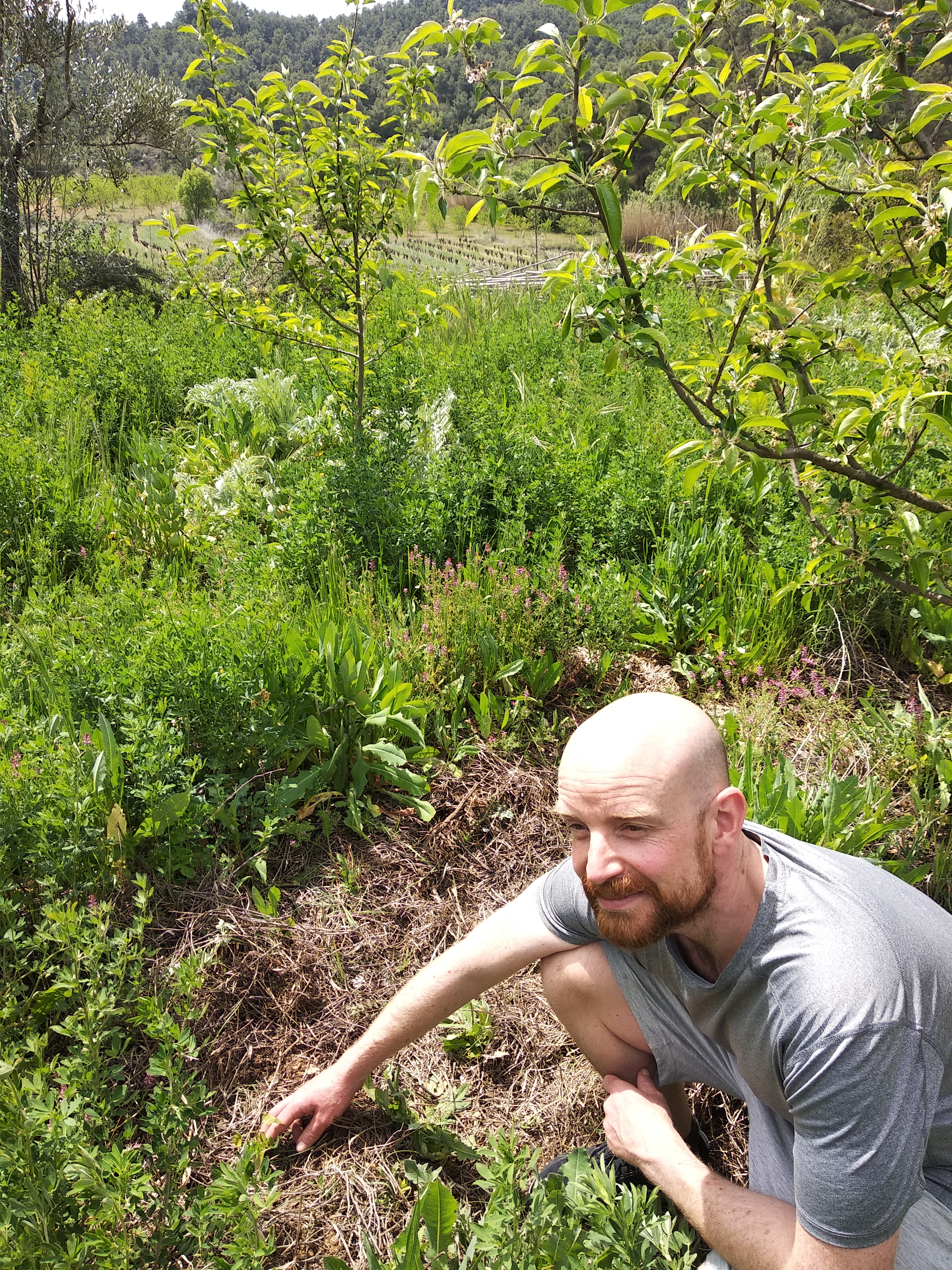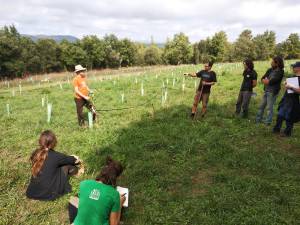
Rovira Regenerativa weekend and inspiration from “Cultural Emergence” (On Fridays I write)
My first thought before writing today was “Has it been a week already?!?” But on reflection I realise that a LOT has happened this week. I’ll focus the post on the big weekend at Boodaville, and sharing wonderful ideas from “Cultural Emergence” by Looby Macnamara. But it was also a week of Erasmus+ grant writing and the second trimestre ultrasound, during which our new baby tucked up and hid their heart. We will do another scan and more grant writing next week.
We also went to a concert!!! The other side of COVID this means being seated, slightly concerned about people around you who uncover their noses, and pretty hot and uncomfortable with your own mask on. But it was worth it for the experience of being in a large crowd sharing an experience and clapping together.
You find yourself wondering, “Was this song written before or after COVID?”. It’s such a huge shift in everything. I am pretty hopeful about outdoor concerts during the warm months though – there will be more music!
weekend in the vall rovira
planting
Our team gathered at Boodaville midday on Saturday to plant more species in the food forest, and to get our nursery of support shrubs and trees started.
We didn’t manage to get blackberry or gooseberry bushes to plant (a shame as the gooseberry from last year is doing well!!) but we added 3 cape gooseberries from Nick’s nursery. We also added some nursery sweet potatoes, potatoes from Anna’s kitchen, and swiss chard from the garden centre. These are not the perennial vegetables we dream of cultivating, but the chard often self-seeds and is mightily drought resistant, and the potatoes will break the soil (and we have them!)
We also have a Sumac tree, dug up from Nick’s employer. Read more about why permaculturists love this tree here. We have planted it where we need a wind break.
Mia demonstrated his holistic vision brilliantly when he looked around the green and lush garden and said, “Wow, we should do something about the hot wind from the south that will dry all this out in summer”. We have worked on the wind break before, with species such as hackberry, italian buckthorn, prickly pear, but without much success. In 2021 we will bring the focus back to this part of the design.
In the nursery we planted cuttings of Rosemary and Eleagnus (also good windbreak material) as well as tree seeds – Honey Locust and Black Locust, flower seeds (more marigold), and some bushes – Caragana, Tanaceto, XXXX two more from a seed exchange Jessica went to last year.
The grafting of pomegranate on the Lentiscus tree isn’t looking great.
To add to this work, and to add to the abandoned terrace project, we have ordered some indigenous nitrogen fixing species from Cultidelta to pick up next week.
workshops with the local community
We ran two small COVID friendly workshops at Mas la Llum, learning from Mia about plant associations, and communities of plants. We looked at local plant communities as a basis for the design of a resilient system (NOT just planting one productive plant). With Anthropogenic Agroforestry you can also replace the elements of the community with a more useful / better adapted species. So for example we will aim to replace the spiky oaks, with the edible oak variety, and can graft fruit onto the “Espino negro” which is already growing.
Mia also showed the ideas behind companion planting in a vegetable garden. By rotating different families in the same soil, and mixing plants with different sizes and functions you can have a packed full garden with NO BARE SOIL!
After the workshop we presented the Rovira Regenerativa project to the group and had our first chance (since the original programmed meeting in 2020) to discuss the needs of the local community and how we can integrate our project into the area to promote regenerative cultures at a social, economic and environmental level.
Thank you so much to Mas La Llum for hosting us in their stunning straw bale and bioconstruction country house. It was a chance to strengthen a wonderful connection with their inspiring project.
It was an amazingly positive and empowering experience to DO something in these crazy COVID times, and we are energised by the weekend.
visioning the regenerative future of the vineyard
On Sunday the highlight was a session looking at a monoculture vineyard and imagining the change that regenerative agroforestry would make. The planned strategies include
- putting in windbreak hedges formed from food producing bushes and trees which increase biodiversity.
- replacing half of the vines with a mixture of different species of fruit and nut trees,
- replacing the bare soil with cover crop and smaller cultivations.
- adding support species and nitrogen fixers to regenerate the soil.
- making the most of the microclimates available to cultivate different species at the bottom of the valley
- and most importantly adding edges to every terrace.
We discussed the planning for easy to harvest lines of trees how to plan the timings of the harvests.
We also imagined a step by step approach, where the farm can continue generating income on many terraces, and the interventions are done firstly on just one terrace.
The conclusion of the session was that Fraser could finally finish piecing together the story of what this project is about.. so he can go and write it up for funding applications! And Anna has the job (urgent and important) of finding out how we can get access to at least one terrace to start implementing the design in September 2021.
cultural emergence
I will just share my favourite quote so far. This book addresses and explains so clearly what I am often trying to explain. It is an amazing tool. The analogies between social processes and natural processes are beautiful.
I really do think humanity is screwed and blindly ignorant to coming catastrophe, but also…. teaching catastrophe doesn’t always create effective outcomes, what if we jump straight to the real crux of the matter which is this, from p. 17




